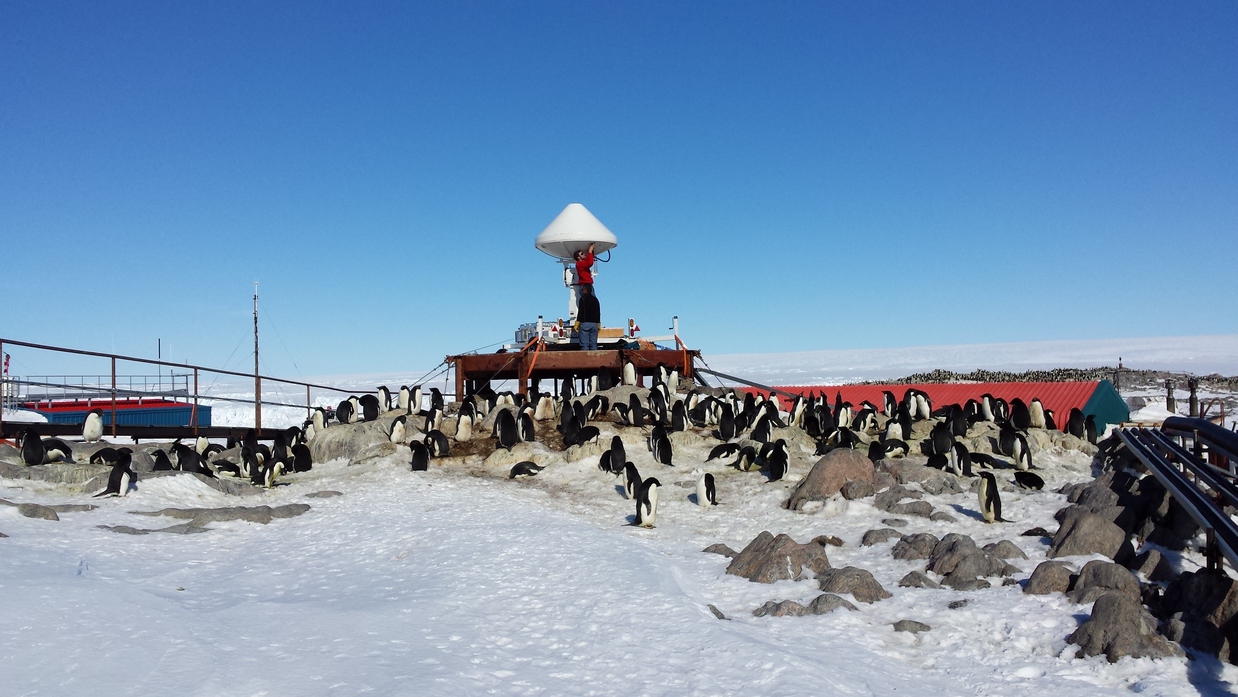Antarctic precipitation is a key term in the surface mass balance of the ice cap, but remains poorly documented and understood. LTE has conducted different field campaigns at the French station Dumont d’Urville in Adélie Land, East Antarctica, in the framework of the international APRES3 project (see http://apres3.osug.fr). Various LTE’s instruments, among which the scanning X-band Doppler polarimetric radar MXPOL, have been deployed in this extreme environment. A new collaboration in the framework of the AAD-led PLATO project is starting and will involve snowfall and blowing snow (with CRYOS) observations at the Australian station Davis in East Antarctica. Observations and model output are combined to better understand the dominant microphyiscal processes governing Antarctic precipitation, as well as to evaluate the strengths and weaknesses of spaceborne remote sensors (e.g., CloudSat).

LTE’s scanning X-band Doppler dual-polarization radar being deployed at Dumont d’Urville, East Antarctica in Nov. 2015.
Collaborators involved: J. Grazioli, J. Gehring